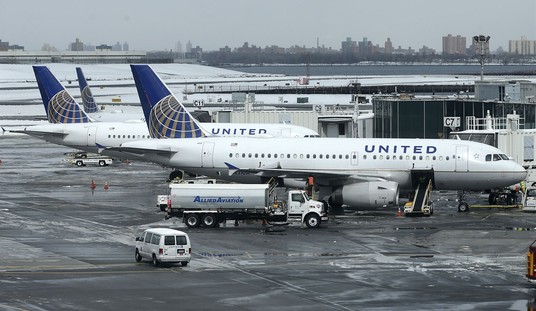I’ve said that Chris Christie losing out on $400 million over four years in federal grant money on Education could be a blessing in disguise–and I wanted to explain why that is.
So this week Education Secretary Arne Duncan announced $3.4 billion split between ten “winners” under their Race to the Top program, with the overwhelming bulk of the remaining pool of money (yes, that’s how quickly they’ve burned through it). The “winners”? New York, Massachusetts, Florida, DC, Georgia, Hawaii, Maryland, North Carolina, Ohio and Rhode Island. Christie’s under fire because New Jersey qualified over Ohio by every measure and passed the eyeball test, but a clerical error by Schundler’s office on one page of a multi-thousand page report made Duncan’s staff reject the application.
But New Jersey is hardly the worst situation — California and Louisiana are now two-time “losers,” on the outside looking in. So is Colorado, which has maybe the best education reforms in the country. How will they respond? The same way people responded to No Child: gimmicks and games to get access to the next round (if there is a next round). Duncan and his staff have used this system to reward states based on criteria that just don’t result in any rhyme or reason. Ohio and Maryland have some of the worst education reform records, but somehow they got in during a difficult year for two Democrat governors running for re-election. And Hawaii? Don’t make me laugh.
Arne Duncan talks a good game on neo-liberal reform, which is the reason the hard left dislikes him, but it’s really all for show — his approach to Race to the Top has been to run it as a $4.35 billion public relations ploy. If Duncan himself was at all committed to reform, he would have targeted the states that are clearly on the right direction as incubators for reform. Instead, he ceded the decision to his bureaucrats. The smart education reform policy guys at places like Fordham are already saying that this could kill Race to the Top for good–there’s going to be no incentive for Congress to renew the program when Duncan and his crew are engaged in such naive acceptance of a process designed purposefully for manipulation.
Talking to a friend who’s a lefty school administrator last month, there was no hesitation about sharing the truth–he talked about RTTT as a one-time shot to get extra cash into the system. The fact is, between Common Core and Race, you’ve got two major short-term incentives for states to reject innovative reforms for safe, bureaucrat approved performance metrics.
The stimulus bill earmarked an additional $100 billion for education. What have we gotten out of it? What will we get out of it? If what it translates to is $100 million a year for four years for ten states, not bloody much (and then you’ve got an unfunded program in just four years). You can blame the unions and the state legislatures for mucking up the program, but it’s unclear why what amounts to No Child II it was ever a wise move to begin with — much like health care reform, it essentially is built on the idea that human nature will move in the opposite direction if only the right amount of prodding is in place.
My colleague at Heartland, Ben Boychuk, supplied five reasons why this fails:
- First, the money was nothing — a fraction of the $100 billion to education in the ARRA.
- Second, Race to the Top was highly prescriptive. The feds laid out 19 requirements the states had to meet in order to qualify for the money.
- Third, despite the prescriptions, RTTT was highly political — you pointed out some of the more egregious examples. Louisiana and Colorado — but especially Louisiana — got screwed. (Or did they?)
- Fourth, the accounting for the RTTT programs is screwy — the money isn’t really enough for these states to do what they want to do, as they promised. At the same time, the states are now more closely tied to the federal government to maintain funding for what will soon be regarded as essential programming.
- Fifth, and most importantly, Race to the Top was a no-lose situation for the unions. Here in California, the CTA could (and did) tell Schwarzenegger and the Legislature to bug off, and what a crying shame we didn’t get $700 million from Race to the Top. But, oh by the way, we’re getting $1.2 billion from Edujobs, which is a nice payday for the CTA. On the other hand, a union could “buy-in” to some fairly benign reforms and reap the benefits of RTTT _and_ Edujobs. Either way, the unions get paid.
So thanks to inexperienced agency leadership and their unwillingness to stand up to middle-tier bureaucrats in their own shop, Race to the Top became a way to trade money for power, and unions are gaming the allocation system exactly as Obama and Duncan intended them to do. This is one of the worst untold stories of the Obama administration: that he has thrown a ridiculous amount of money at this problem with no rhyme or reason (Boychuk notes that in 2008, federal funding of K-12 education accounted for about 10 percent of total funding — today, it’s close to 19 percent), and given Duncan a fair amount of leash, and will end up achieving nothing for it.
Public education is a solvable problem, and there are models for success. But we’ve never had anyone in the Education Secretary job in the modern era with the political will to do what’s necessary–and Arne Duncan is just one more guy roaming around holding the bag of money in one hand and a ream of red tape in the other.













Join the conversation as a VIP Member